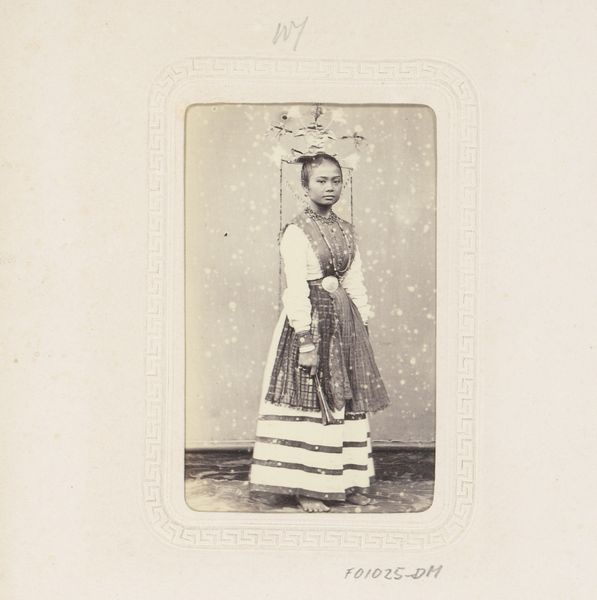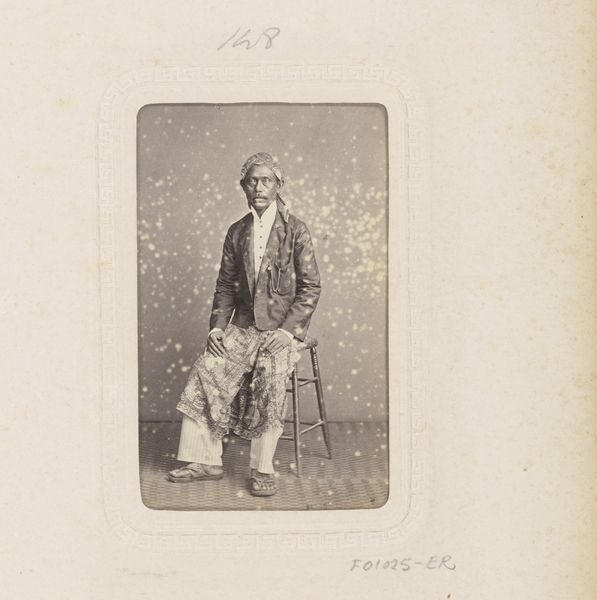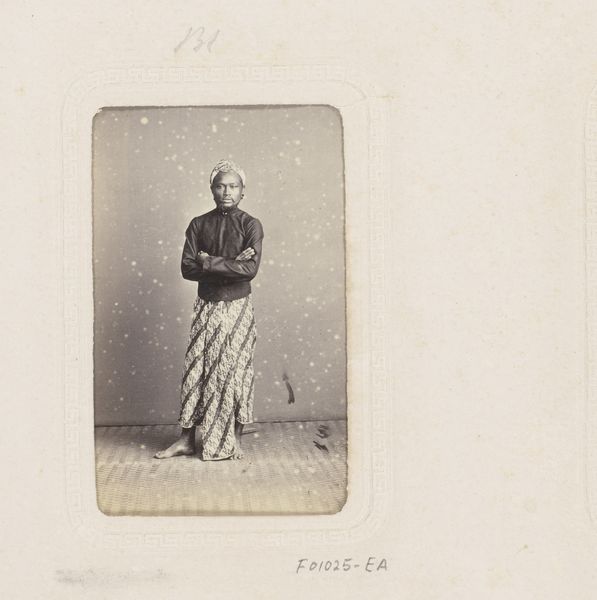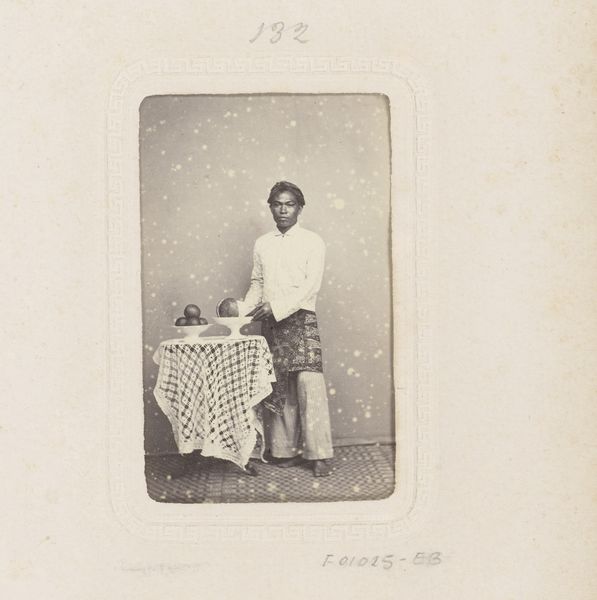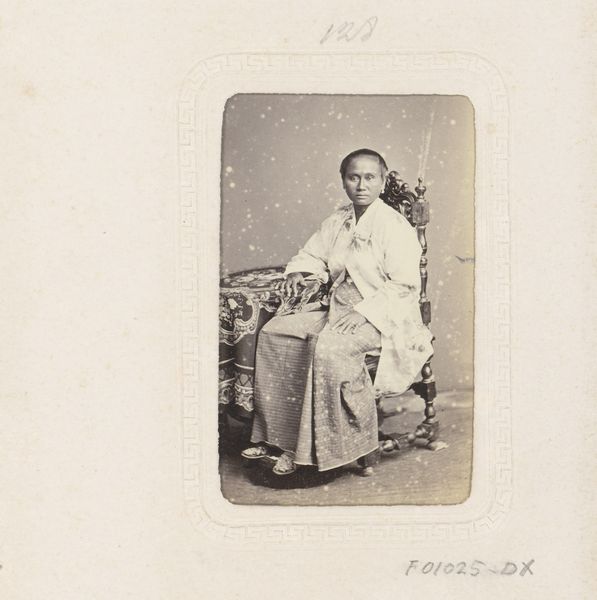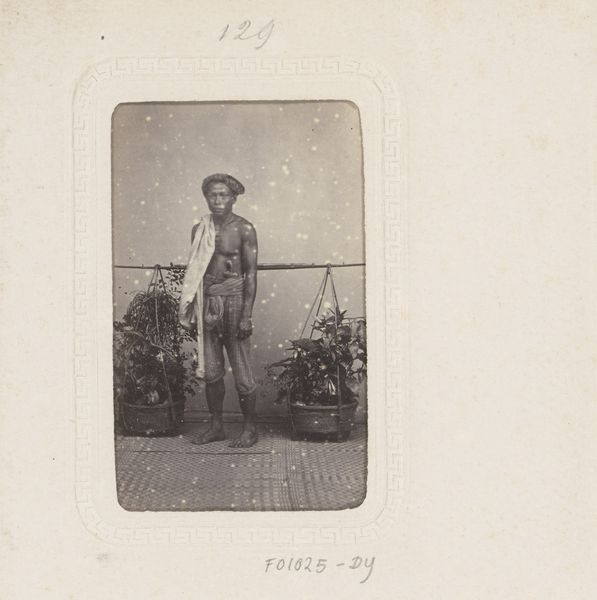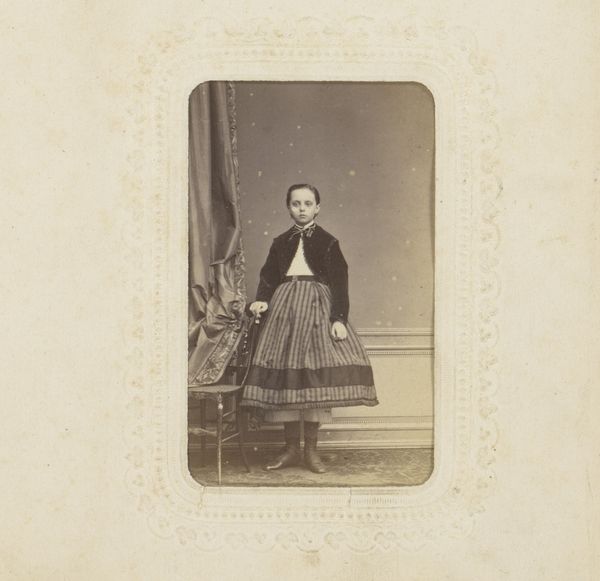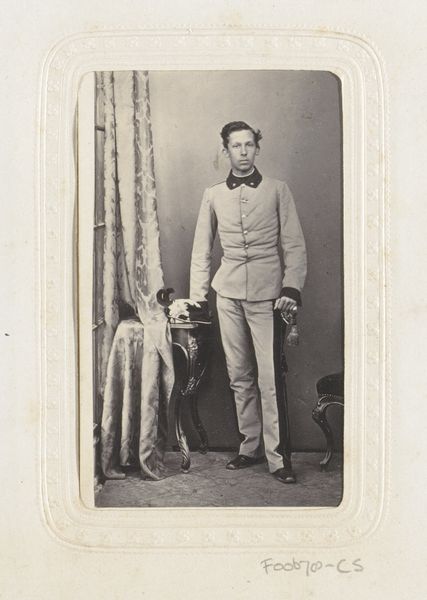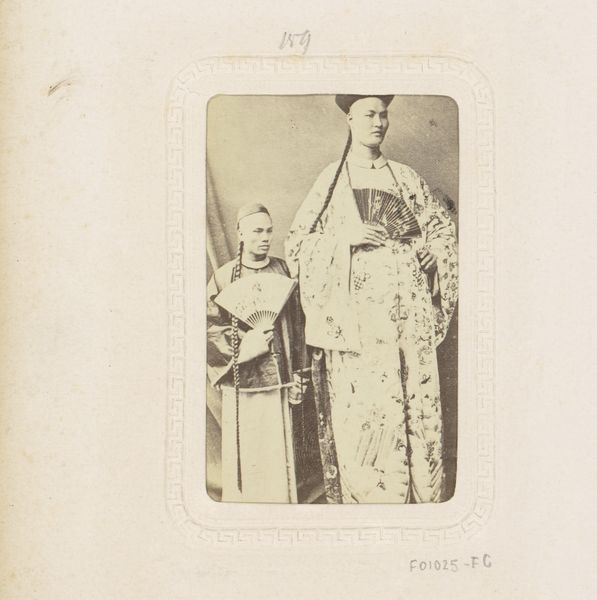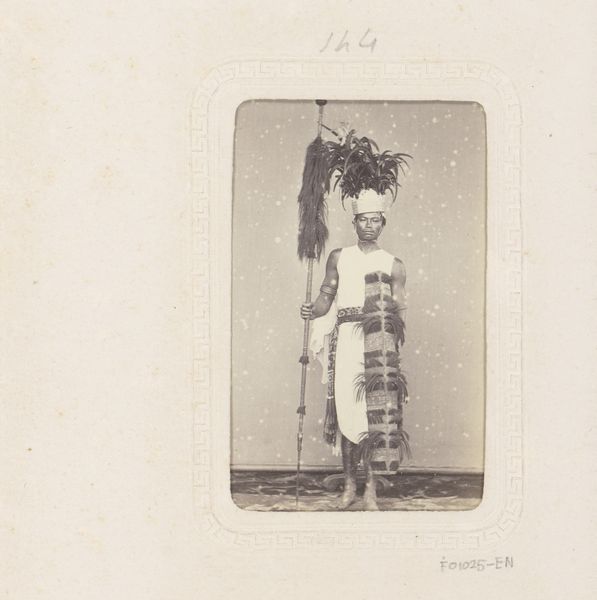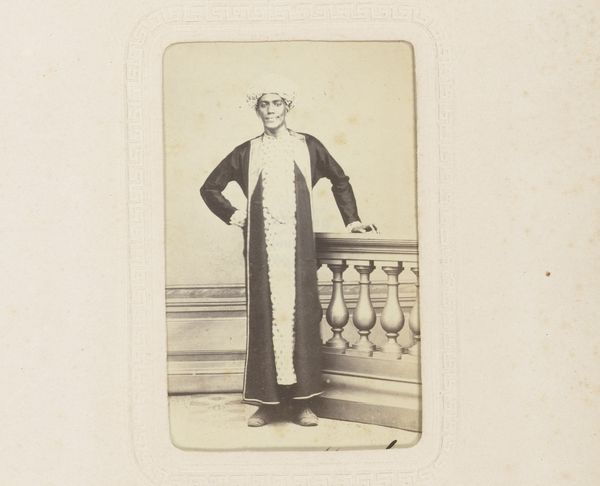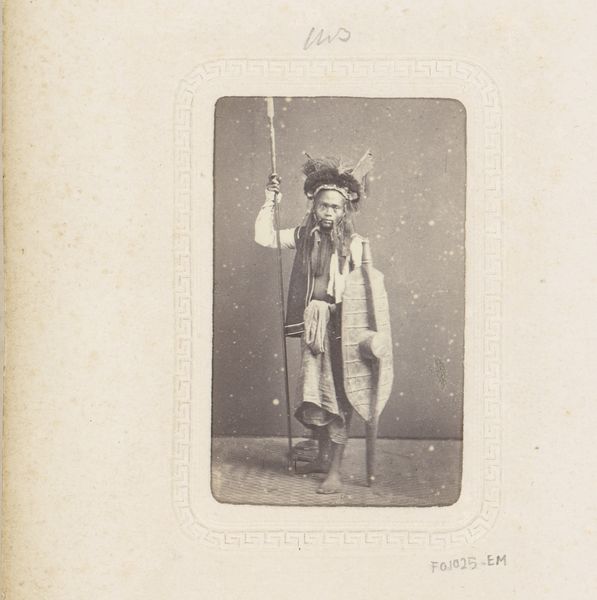
photography
#
portrait
#
african-art
#
photography
#
orientalism
#
realism
Dimensions: height 85 mm, height 52 mm
Copyright: Rijks Museum: Open Domain
Editor: This is "Portret van een Indonesische matroos," or "Portrait of an Indonesian Sailor," taken sometime between 1857 and 1880 by Woodbury & Page. The photographic print shows a young man in what appears to be a mix of Indonesian and Western clothing. I find the contrast between the tailored shirt and bow tie with the batik sarong and head wrap particularly striking. What stands out to you? Curator: It’s more than striking; it's telling. Images like this one were often produced within the framework of colonial power dynamics. How do you think the photographer's gaze and the subject’s identity intersect? Consider the ways in which "Orientalism," and perhaps a touch of "realism", aestheticize and objectify the individual, and how this can contribute to skewed perceptions of identity. Editor: So, the ‘realism’ isn't necessarily about reflecting reality, but about constructing a specific, colonial-era view? Curator: Precisely. What choices are made in presenting him: the blend of traditional and modern clothes, the somewhat staged pose? It reinforces certain power structures. The “Indonesian sailor” is translated to meet the expectations of a European audience. It’s crucial to think about who profits from such an image and what stories get erased in the process. Who was this individual beyond this single constructed representation? How does this relate to ongoing conversations around representation today? Editor: I see your point. It makes me reconsider how I initially viewed it simply as a historical portrait. There's a lot more complexity to unpack. Curator: Absolutely. By engaging with the historical and social contexts, we move beyond a superficial understanding to challenge and critically assess these visual records of the past. We begin to uncover how image making contributes to larger narratives about race, power, and identity. Editor: Thanks, that’s a much more critical perspective than I had before. It pushes me to think beyond the surface.
Comments
No comments
Be the first to comment and join the conversation on the ultimate creative platform.
